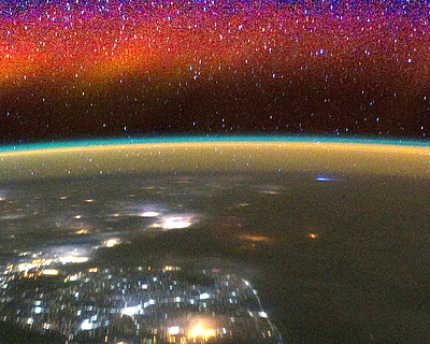
The space agency’s aim is to use the data to improve forecasting of space weather events that impact satellites, astronauts in space and technology on Earth. Called the Global-scale Observations of the Limb and Disk (GOLD) mission, the instrument will be on a commercial satellite and will observe the intermingling of space and Earth’s uppermost atmosphere.
Known as the ionosphere, the region is ionized by the sun’s ultraviolet light, the University of California at Berkeley website explains. Ionized layers affect the transmittance of radio waves. The layer stretchers from about 30 miles above Earth's surface to the edge of space -- about 600 miles up.
The GOLD mission, set to launch Jan. 25 from French Guiana, will be 22,000 miles above the planet’s surface. A second mission, the Ionospheric Connection Explorer, or ICON, launches later in 2018 and will be closer -- 350 miles above Earth.
OZONE HOLE: Scientists believe that they are seeing evidence of recovery of the Antarctic ozone hole.
By examining satellite images, researchers have found that levels of ozone-destroying chlorine are declining, resulting in less ozone depletion, NASA reports.
“Measurements show that the decline in chlorine, resulting from an international ban on chlorine-containing man-made chemicals called chlorofluorocarbons, has resulted in about 20 percent less ozone depletion during the Antarctic winter than there was in 2005 — the first year that measurements of chlorine and ozone during the Antarctic winter were made by NASA’s Aura satellite,” the space agency reports.
In the upper atmosphere, ozone forms a protective layer that shields Earth from the sun's ultraviolet rays. Chlorofluorocarbons, which were once used in hairspray and other consumer products, are chemical compounds that rise into the stratosphere, where they are broken apart by the sun’s ultraviolet radiation, releasing chlorine atoms that destroy ozone molecules, according to NASA. Complete recovery of the Antarctic ozone hole will take decades.
The study, "Decline in Antarctic Ozone Depletion and Lower Stratospheric Chlorine Determined From Aura Microwave Limb Sounder Observations," was published in the journal, Geophysical Research Letters, on Jan. 4, by Susan Strahan and Anne R. Douglass.
Related:
5 things to know: The space weather mission
If you wish to comment, like us on Facebook and tell us what you think.